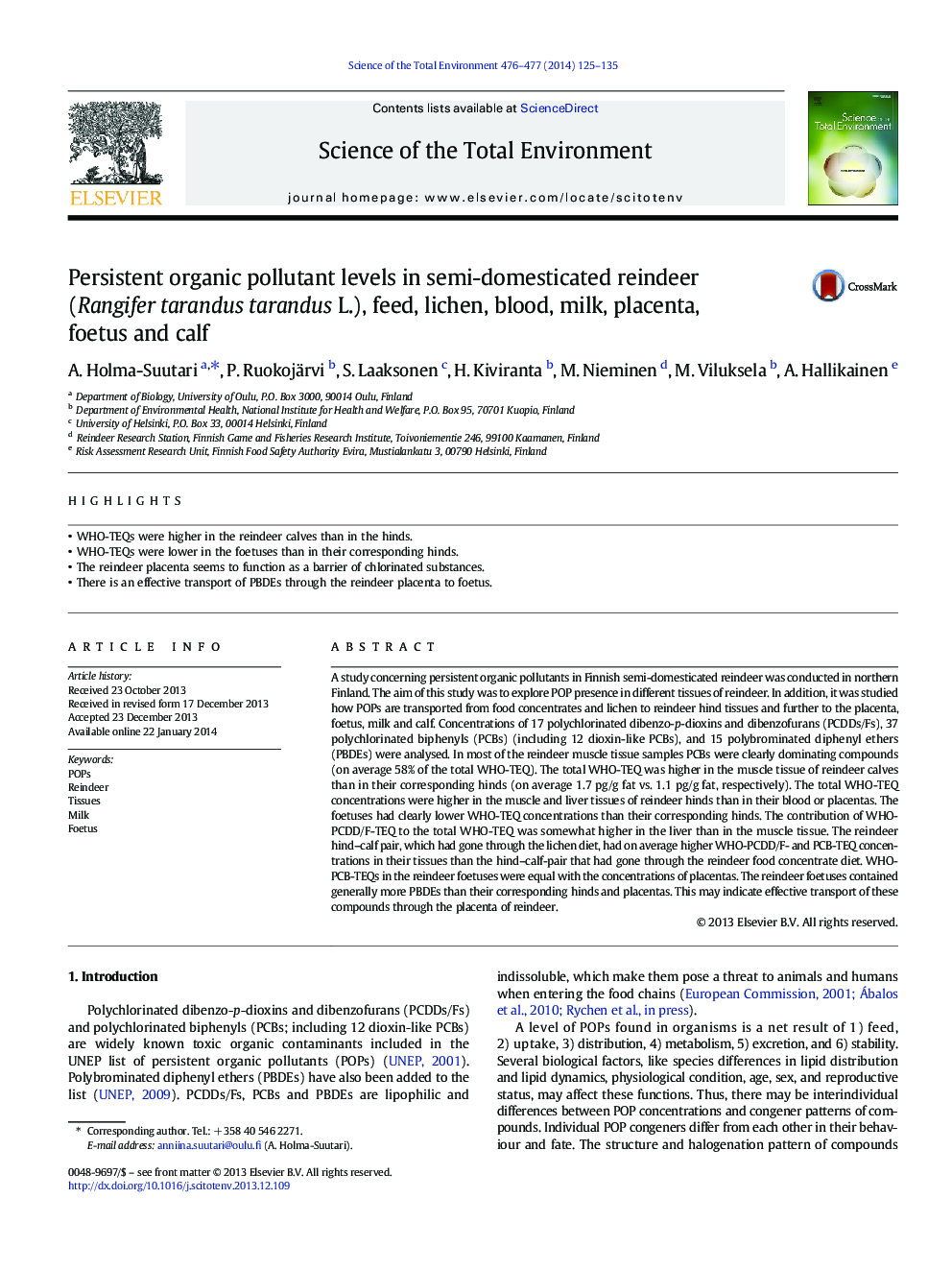| کد مقاله | کد نشریه | سال انتشار | مقاله انگلیسی | نسخه تمام متن |
|---|---|---|---|---|
| 4428529 | 1619789 | 2014 | 11 صفحه PDF | دانلود رایگان |

• WHO-TEQs were higher in the reindeer calves than in the hinds.
• WHO-TEQs were lower in the foetuses than in their corresponding hinds.
• The reindeer placenta seems to function as a barrier of chlorinated substances.
• There is an effective transport of PBDEs through the reindeer placenta to foetus.
A study concerning persistent organic pollutants in Finnish semi-domesticated reindeer was conducted in northern Finland. The aim of this study was to explore POP presence in different tissues of reindeer. In addition, it was studied how POPs are transported from food concentrates and lichen to reindeer hind tissues and further to the placenta, foetus, milk and calf. Concentrations of 17 polychlorinated dibenzo-p-dioxins and dibenzofurans (PCDDs/Fs), 37 polychlorinated biphenyls (PCBs) (including 12 dioxin-like PCBs), and 15 polybrominated diphenyl ethers (PBDEs) were analysed. In most of the reindeer muscle tissue samples PCBs were clearly dominating compounds (on average 58% of the total WHO-TEQ). The total WHO-TEQ was higher in the muscle tissue of reindeer calves than in their corresponding hinds (on average 1.7 pg/g fat vs. 1.1 pg/g fat, respectively). The total WHO-TEQ concentrations were higher in the muscle and liver tissues of reindeer hinds than in their blood or placentas. The foetuses had clearly lower WHO-TEQ concentrations than their corresponding hinds. The contribution of WHO-PCDD/F-TEQ to the total WHO-TEQ was somewhat higher in the liver than in the muscle tissue. The reindeer hind–calf pair, which had gone through the lichen diet, had on average higher WHO-PCDD/F- and PCB-TEQ concentrations in their tissues than the hind–calf-pair that had gone through the reindeer food concentrate diet. WHO-PCB-TEQs in the reindeer foetuses were equal with the concentrations of placentas. The reindeer foetuses contained generally more PBDEs than their corresponding hinds and placentas. This may indicate effective transport of these compounds through the placenta of reindeer.
Journal: Science of The Total Environment - Volumes 476–477, 1 April 2014, Pages 125–135